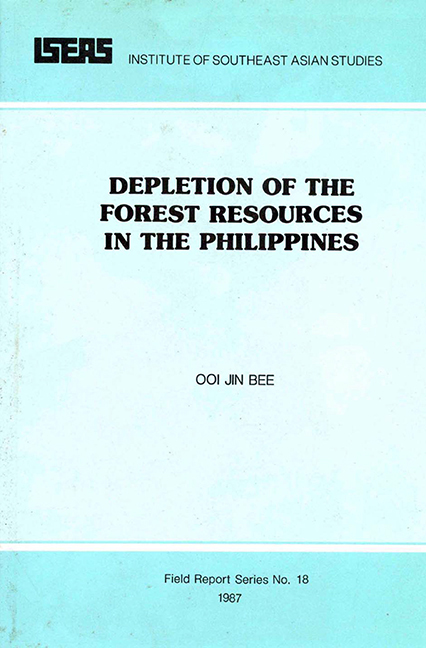Book contents
II - The Philippine Forest Cover
Published online by Cambridge University Press: 21 October 2015
Summary
The Philippines is a collection of about 7,100 islands with a total land area of 3D million hectares. The two largest islands – Luzon and Mindanao – are roughly equal in size; together they make up two-thirds of the land area of the Philippines. The Philippine islands would fall entirely within the TMF biome. The characteristic vegetation is a rich and highly diverse rainforest with some 3,000 species of trees, the majority of which belong to the Dipterocarpaceae (lauan) family. Most of the commercially valuable species are members of this family. The volume of timber in dense timber stands in such forests varies from 100 to 200 cu. m./ha. This forest type is best developed in areas (up to 800m. altitude) with heavy rainfall uniformly distributed throughout the year.
A second forest type is that which develops on that part of the Philippines – the western strip – which experiences a distinct dry season. Here the vegetation is characteristically more open. The commercially valuable species are molave (Vitae parviflora), narra (Pterocarpus indicus), tindalo (Pahudia rhomboidea), ipi1 (Instsia bijuga), and dangula (Teijsmanniodendron ahernianum). The dominant member of this group is molave, after which this forest type is named. Timbers from these species are highly prized for their beauty and durability. They make fine furniture woods, in contrast to wood from the dipterocarp family which provides good construction timbers. The volume of timber in a stand averages only 30 cu. m./ha.
The other vegetation types include pine and montane forests, mangrove forests, and beach forests. Timber from these forests enters the local but not the export markets (Salita 1974; Virticio & Torres 1977). In addition to the main product of timber, the forests are a source of a wide range of minor products: woodfuels; barks for tanning, dyeing, and flavouring; resins and oils from barks, sapwood and nuts; wild rubber and gutta-percha; rattan; construction materials from bamboo and other palms; and medicinal and pharmaceutical products.
- Type
- Chapter
- Information
- Depletion of the Forest Resources in the Philippines , pp. 10 - 12Publisher: ISEAS–Yusof Ishak InstitutePrint publication year: 1987

